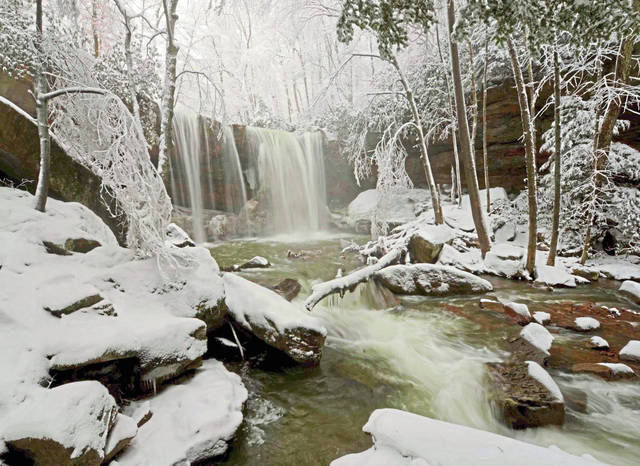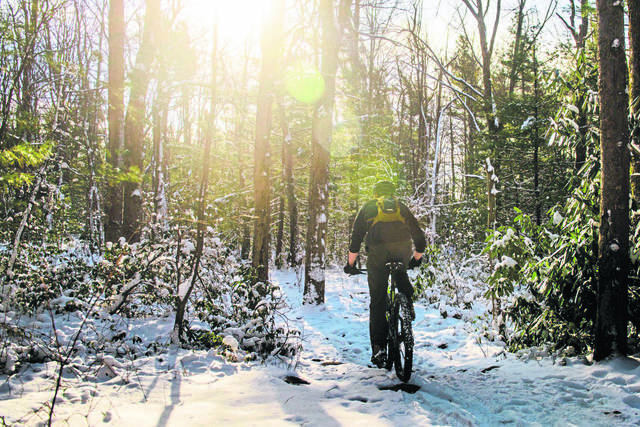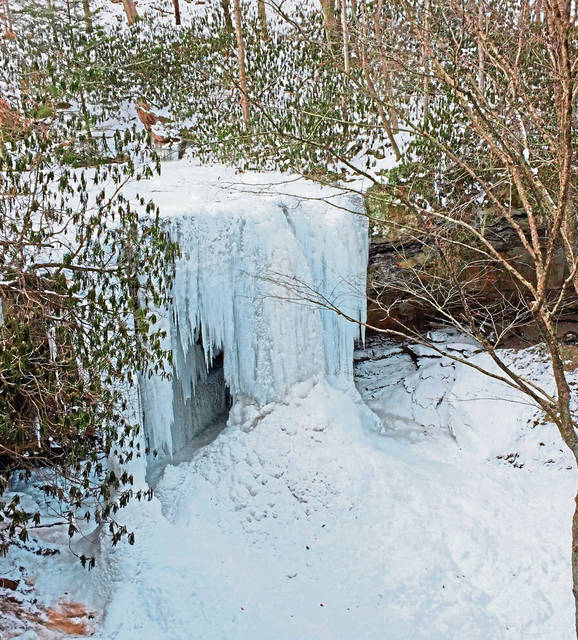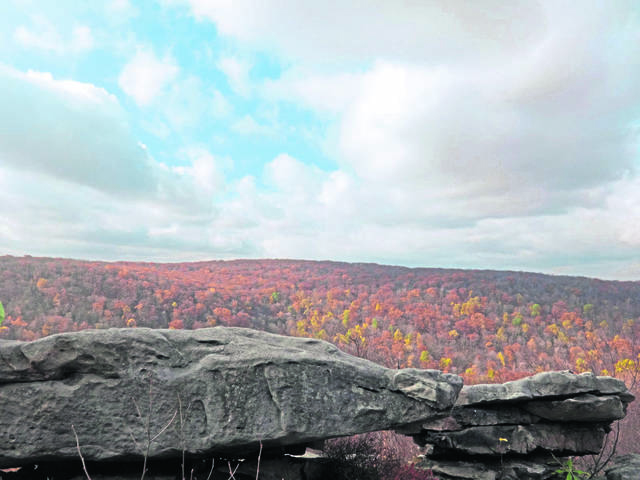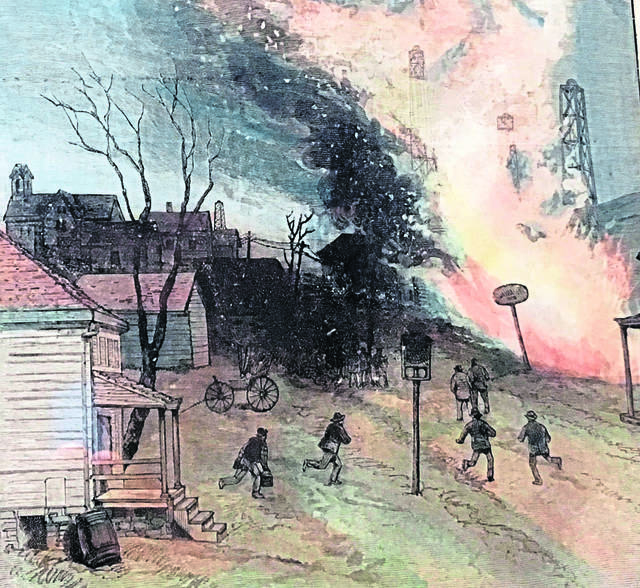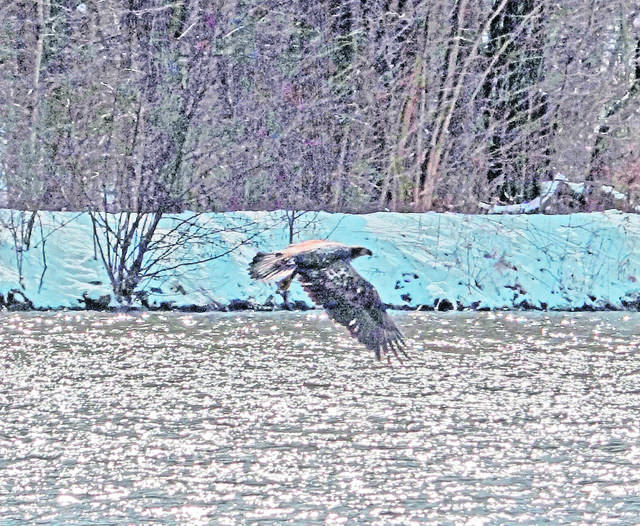Beat the winter blues with wildlife and Westmoreland's beautiful views
The winter of 2021 is shaping up to look much like the spring, summer and fall of 2020 — at least when it comes to most forms of in-person socializing.
But one place that has remained safe for activity throughout the pandemic has been the great outdoors, and that certainly does not change in the winter.
Westmoreland County and the surrounding area offer a host of ways to enjoy nature and get a little exercise — or a lot of exercise, depending on how far and how high you want to hike.
From gentle, handicap-accessible trails to steep ascents on muddy ground, the region has something suited to everyone, and plenty of wildlife to see along the way.
An excellent view
“I hike all year round,” said Murrysville Recreation Director Carly Greene. “I like to go places I’ve never seen before and find new trails.”
That includes the colder months.
“We went to Beam Rock outside Ligonier, and there are a lot of hiking and snowmobiling trails,” Greene said.
Beam Rock Trail, in Laurel Summit State Park southeast of Ligonier, is just under a mile, and while the trail itself only rises by 78 feet, the endpoint provides a view from more than 2,600 feet above sea level.
Laurel Summit State Park also has the Wolf Rocks Trail, a 4-mile loop in the Forbes State Forest. Its western end features a panoramic view of Linn Run State Park and Westmoreland County.
“I go to Wolf Rocks in the winter because it looks different in every season,” said Rusty Glessner, a photographer who lives in State College and grew up in Somerset County. “There’s fewer bugs in the winter, certainly, and you don’t have to worry about snakes or ticks. Adams Falls, nearby in Linn Run is another good one. Those are kind of my go-to spots.”
For picturesque wintertime spots, Glessner also recommended any of the region’s waterfalls, but particularly those in Ohiopyle State Park in Fayette County.
“It’s probably my favorite place to go in the whole region, in the winter,” he said. Glessner has even written a guide for the PA Bucket List website, “22 Must-See Waterfalls in the Laurel Highlands of PA.”
Local history
The Westmoreland Heritage Trail, in addition to being a mostly level, easily hikeable path, also passes by a great deal of local history. Just a few of the things along the way:
• The Haymaker gas well, drilled in 1878, was the nation’s first commercial natural gas well. It was drilled 1,400 into the same sandstone where a memorial plaque is now fixed, just north of the trail near Braun Avenue in Murrysville. The well caught five for 18 months in 1881, but was later brought under control and piped gas to Pittsburgh.
• The Export coal mine, the first major mine on the Turtle Creek Railroad, operated until 1952. This year marks the 100th anniversary of a 1921 strike by coal workers. Just south of the trail, off Washington Avenue, one of the Westmoreland Coal Company fan houses still stands, and a few years ago a local Scout troop unearthed several former mine entrances near District Court 10-3-02.
Winter wildlife
Western Pennsylvania is part of the Atlantic and/or Mississippi flyways for migratory birds — depending on what map you’re looking at — and local parks and trails offer the chance to see a great many passing through, according to naturalist Susan Miller of Plum.
“Winter’s a great time to see waterfowl, hawks and bald eagles,” Miller said. “After a snowstorm is a good time to look for waterfowl because it can drive them down during migration to rest in lakes or ponds.”
Species found locally include the pied-billed grebe, ring-necked duck, bufflehead, redhead, American wigeon and American coot.
Miller said Ethel Springs Lakes in Derry Township is a good spot for waterfowl.
“On Jan. 3, someone reported on eBird that they’d observed 270 common mergansers at the Beaver Run Reservoir overlook,” Miller said. “And bald eagles are a frequent sight at the Loyalhanna Lake Dam area.”
Without the leaf cover of spring and summer, some of the region’s raptors are more easily spotted.
“Red-tailed hawks, red-shouldered hawks, Cooper’s hawks, sharp-shinned hawks and American kestrels are more visible, and you can find them perching on telephone poles, wires and trees,” she said.
Those with a serious interest in birding can also find birding hot spots through the free service eBird.org, where nature lovers record when and where they observe different species.
Always be prepared
As with any hike, being prepared is essential and specific to the destination. The supply list for a walk on the Westmoreland Heritage Trail certainly will not look the same as one for a hike to a summit in the Laurel Highlands.
According to Outdoors.org, a good winter supply list includes at least 2 quarts of water for each person, a waterproof pack cover, high-energy food and snacks, toilet paper, hand sanitizer, lip balm, sunglasses, first aid kit, a lighter or matches, whistle, fire starter, trail map, compass and proper clothing based on the weather.
“As long as you’re wearing the right clothes, you’re bundled up and you know where you’re going, you’ll be all right,” Greene said. “There’s a lot of information out there about being in the cold whether you’re hiking, camping or something else.”
Patrick Varine is a TribLive reporter covering Delmont, Export and Murrysville. He is a Western Pennsylvania native and joined the Trib in 2010 after working as a reporter and editor with the former Dover Post Co. in Delaware. He can be reached at pvarine@triblive.com.
Remove the ads from your TribLIVE reading experience but still support the journalists who create the content with TribLIVE Ad-Free.

